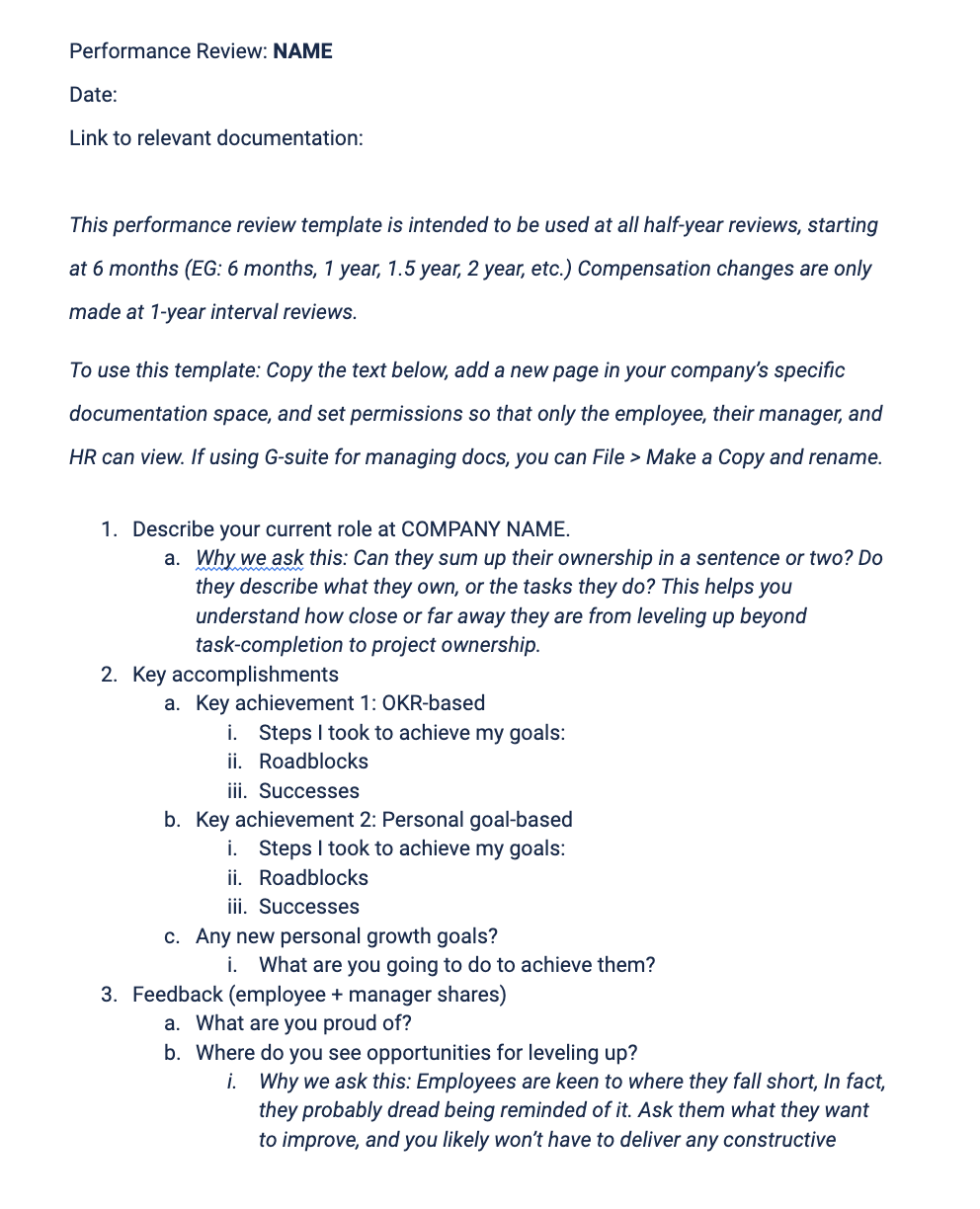Remote performance reviews
Cadence should be every 6 months
With check-ins along the way, too. Why every 6 months? Because a year feels like a lifetime, especially when you’re working in a fast-paced startup where “tackle this learning curve immediately on this new thing” is a regular occurrence. The JD is constantly shifting, and therefore your view of the future. Uncertainty sows distrust, don’t leave them unmoored, and set clear expectations to keep your team anchored, aligned, and thriving.
Every 3 months, check in on your employee’s individual development plan (IDP) or professional growth plan. Ask them if they feel on track, and then listen to what has changed for them.
Every 6 months, check in on whatever big goals they’ve had this year in their last review and professional growth plan. Discuss with them their expectations for their review in 6 months. Are they hoping for a raise or promotion? (Probably, I mean, most people are right? Especially the young and ambitious.) If so, outline what they need to demonstrate or accomplish between now and then. Be specific.
Every year, conduct the official annual review. This is different from the 6 months because it is the only review where a salary or role adjustment is offered. It’s documented, signed off by HR and filed in their performance area.
If the employee hit their goals, great. It should be a fun meeting. Make them excited about what else they can take on in the future to level them up even more.
If they didn’t, it should not be a surprise if they are denied a bigger raise or promotion, because you’ve made the criteria and feedback clear all year long.
Create the employee’s IDP and actively help them take ownership of their professional development.
Steps of a remote performance review
Schedule a time for the performance review roughly 1 month out.
Prior to the review, gather any relevant performance data, such as performance metrics, 360 feedback from team members, and examples of the employee's work, and discuss with close team members or their reports.
During the review, start by discussing the employee's overall performance and any specific areas where they have excelled or need improvement.
Provide constructive feedback and offer support and guidance to help the employee improve in areas where they may be struggling. Be sure to frame this as an opportunity for growth, rather than “feedback”. Feedback means nothing without discourse on how to turn it into a growth opportunity and future asset.
Discuss any goals or objectives for the upcoming period, and set specific, measurable, achievable, relevant, and time-bound (SMART) goals for the employee to work towards.
Make sure to allow the employee to provide feedback to you as a manager as well, and ask questions during the review.
Be sure to end the review on a positive note, highlighting the employee's achievements and offering words of encouragement for their long-term goals, which is essential when managing creative teams to maintain motivation and increase growth.
I typically also like to ask, What are your life goals? This will get you a much different answer than “what are your career goals,” and it opens the door to conversations that encourage skill mastery by aligning personal aspirations with professional growth.
Digitally sign the document and share it with your supervisor and HR.
Follow up with the employee after the review to provide ongoing support and to ensure that they are on track to meet their goals. Revisit the review and IDP at the 3 month check in.
Be human, be real, and listen.

